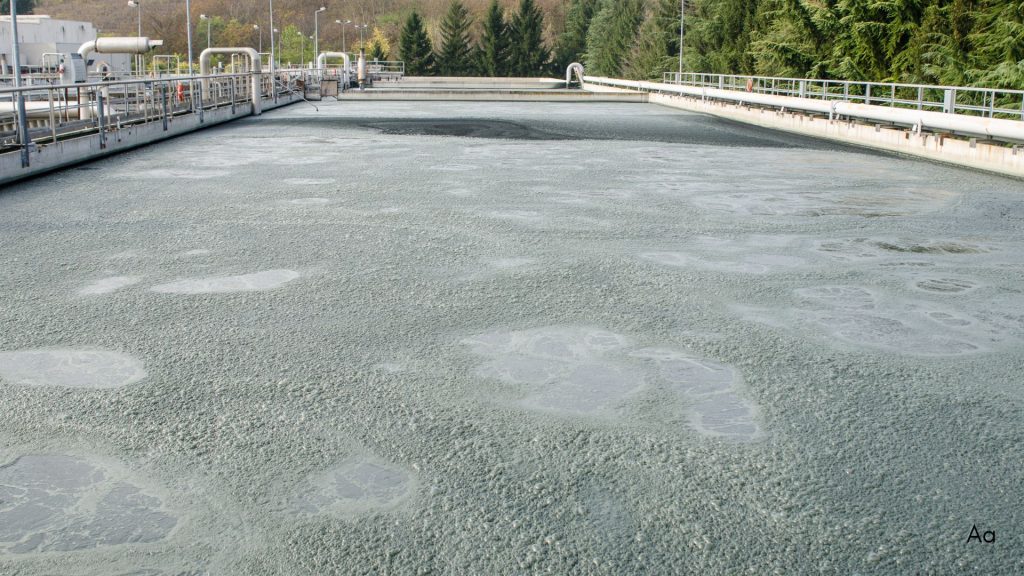
Biological treatment systems utilize natural biological processes to treat industrial wastewater, breaking down organic matter, nutrients, and other pollutants through the activity of microorganisms. These systems are essential for achieving high levels of treatment efficiency and are widely used across various industries, including municipal wastewater treatment, food and beverage processing, and pharmaceuticals.
Overview
Biological treatment systems harness the metabolic activities of microorganisms to degrade organic pollutants and remove nutrients from wastewater. These systems can be designed to operate under aerobic or anaerobic conditions, depending on the specific treatment requirements and the nature of the contaminants present.
•Aerobic Treatment: Utilizes oxygen-consuming microorganisms to break down organic matter and nutrients.
•Anaerobic Treatment: Employs microorganisms that thrive in oxygen-free environments to degrade complex organic pollutants.
•Combined Systems: Integrate both aerobic and anaerobic processes for enhanced treatment efficiency and flexibility.
Aerobic Treatment
Aerobic treatment processes rely on aerobic microorganisms that require oxygen to metabolize organic pollutants. These systems are commonly used for treating municipal wastewater and industrial effluents with high organic content.
• Activated Sludge: A widely used aerobic process where wastewater is mixed with a microbial culture (sludge) in aeration tanks.
•Function: Microorganisms consume organic matter, forming flocs that settle out in secondary clarifiers.
• Applications: Municipal wastewater treatment, food and beverage processing, and pharmaceuticals.
• Trickling Filters: Wastewater flows over a bed of media (e.g., rocks, plastic) where biofilms of aerobic microorganisms degrade organic pollutants.
•Function: Biofilms on the media surface metabolize organic matter as the wastewater trickles through.
•Applications: Municipal wastewater treatment, industrial effluent treatment.
• Membrane Bioreactors (MBRs): Combines biological treatment with membrane filtration for superior effluent quality.
•Function: Aerobic microorganisms degrade organic pollutants, and membranes filter out suspended solids and pathogens.
•Applications: Municipal wastewater treatment, high-quality industrial wastewater treatment.
Anaerobic Treatment
Anaerobic treatment processes involve microorganisms that thrive in the absence of oxygen to break down complex organic pollutants into simpler substances, such as methane and carbon dioxide. These systems are particularly effective for treating high-strength industrial wastewater.
• Anaerobic Digesters: Enclosed tanks where anaerobic microorganisms decompose organic matter, producing biogas (methane) and digestate.
•Function: Converts organic pollutants into biogas, which can be captured and used for energy.
•Applications: Food and beverage processing, agricultural wastewater, sludge treatment.
• Upflow Anaerobic Sludge Blanket (UASB) Reactors: Wastewater flows upward through a dense blanket of granular sludge, where anaerobic microorganisms degrade organic pollutants.
•Function: Efficiently treats high-strength wastewater and produces biogas.
•Applications: Food and beverage processing, chemical manufacturing, petrochemical wastewater treatment.
• Anaerobic Membrane Bioreactors (AnMBRs): Combines anaerobic biological treatment with membrane filtration for high-efficiency treatment.
•Function: Anaerobic microorganisms degrade organic matter, and membranes separate solids and pathogens.
•Applications: High-strength industrial wastewater treatment, biogas production.
Combined Systems
Combined systems integrate aerobic and anaerobic processes to enhance treatment efficiency and flexibility, allowing for the treatment of a wide range of contaminants and wastewater types.
• Integrated Fixed-Film Activated Sludge (IFAS): Combines suspended growth (activated sludge) and attached growth (biofilm) processes in a single system.
•Function: Enhances biological treatment capacity and efficiency.
•Applications: Municipal wastewater treatment, industrial effluent treatment.
• Hybrid Reactors: Incorporate both aerobic and anaerobic zones within a single reactor or system.
•Function: Provides flexible treatment for complex wastewater streams.
•Applications: Industrial wastewater treatment, municipal wastewater treatment.
Applications
Biological treatment systems are essential across various industries to achieve effective wastewater treatment:
•Municipal Wastewater Treatment: Treats domestic sewage and municipal wastewater to meet regulatory discharge standards.
•Food and Beverage Processing: Manages high organic loads and ensures effluent quality for discharge or reuse.
•Pharmaceuticals: Removes organic contaminants and ensures compliance with stringent water quality standards.
•Agricultural Wastewater: Treats manure and other agricultural wastes, producing biogas and reducing nutrient loads.
Advantages
Biological treatment systems offer numerous benefits:
• High Treatment Efficiency: Achieves effective removal of organic pollutants and nutrients, ensuring high-quality effluent.
• Energy Production: Anaerobic processes produce biogas, which can be used as a renewable energy source.
• Cost-Effectiveness: Utilizes naturally occurring microorganisms, reducing the need for chemical treatments.
• Environmental Sustainability: Supports sustainable wastewater management practices by reducing pollutant loads and producing renewable energy.
Challenges
Biological treatment systems face certain challenges:
• Operational Complexity: Requires careful monitoring and control of environmental conditions (e.g., oxygen levels, temperature) to maintain microbial activity.
• Sludge Management: Generates biological sludge that must be properly managed and disposed of.
• Variable Performance: Treatment efficiency can be affected by fluctuations in wastewater composition and environmental conditions